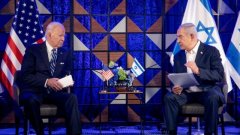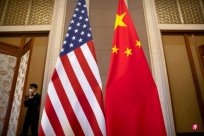Source: Bloomberg
China can withstand any new tariffs on it. Even Donald Trump's punitive tariffs to be levied to add, because the prices of Chinese products are too competitive and difficult to resist.
This is the mainstream view at the Canton Fair this month.At this China ’s largest trading event held in Guangzhou, many buyers and sellers disagree with the risk of the upgrading of the trade war.
Jack Jin, who sells cargo control tools and truck parts in southeast China, said his client said that even 50%of tariffs could not be taken away.He said that about half of his orders come from Americans, and their selling price can reach four times the purchase price.
The tension between China and its trading partners in the year of the United States election is being upgraded. Some countries have accused China of dumping goods to provide unfair subsidies for domestic industries.China has been watching the list of products longer, including metal and ships and electric vehicles.
Trump once said that if he was elected as the president of the United States, it may generally impose more than 60%of tariffs on Chinese products.The current President Joe Bayeng, who will face the duel with Trump in the November election, said last week that he would double the tariffs on Chinese steel and aluminum products, and some emerging economies also expressed concerns about the import of Chinese steel products.EssenceThe European Union launched a survey of China's electric vehicle subsidies, which may lead to new tariffs in a few months, and is also reviewing the solar and railway industries.
But the traders participating in the Canton Fair said that the world needs Chinese products in any way.They are considering the way to avoid tariffs.Buyers who are looking for a supply chain alternatives have said that they still hope that China will continue to be their number one source of supply, because other countries cannot keep up with quality and cost.
Countermeasure
Samuel Jackson, who came to the Canton Fair, was a buyer of a Persian furniture company. He said that he could buy products with half of the price of European manufacturers here.Tariffs may have some impact, he said, "But China is too big. They still have other countries to sell."
According to Alex Stut, a car accessories importer from California, American consumers have affected the impact of tariffs on Chinese goods.When Trump taxed, his retailer refused to pay a higher price in the United States, but asked him to let the manufacturer provide a slightly cheaper version.
In the final analysis, who paid for it? It is consumers. "He said."You either make some concessions in terms of product quality, or pay more banknotes for the same product."
Student describes a method of offset tariffs he found, that is, the so -called "offshore price" is used to priced.This means that the cost of logistics and warehousing is left to his American customers, and the sales price as the basis of the tariff calculation has dropped.He said that there are many different ways to change.
Even for buyers who owe developed countries, Chinese products are very cheap.Daniel Lulandala is the owner of a mechanical trading company in Tanzania. This is the first time he has come to China and he is excited to be able to negotiate directly with local manufacturers.
He found that the offer of the Canton Fair was so low that his business ambition was also inspired. He is now considering opening a factory to produce building blocks in China and using a Chinese machine with a price of about 8,000 US dollars.He believes that he can earn this money in just three months.
"If you come early, I may not be now at this level, I am talking about business," he said.
The organizer said that only 18%of the 125,000 foreign buyers who participated in the trading as of April 19 were from the United States and Europe.This is not only because of trade tensions, but also because of the firm relationship with these economies. Although the number of buyers is small, they are all big buyers.Two -thirds of the participants came from China's "Belt and Road" initiative to participate in the most emerging market in the country. This proportion ten years ago was about half.



